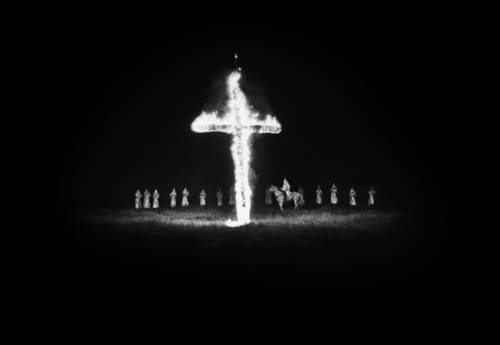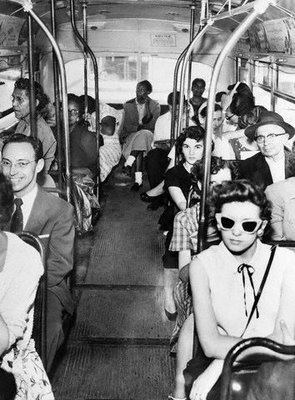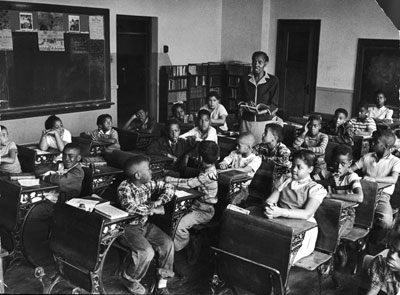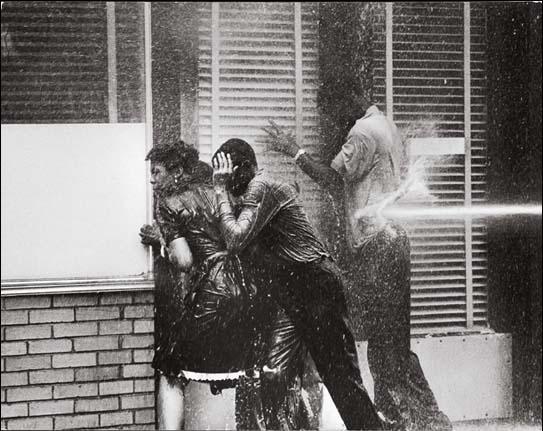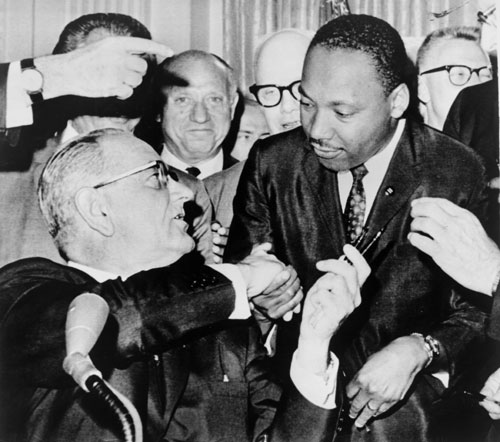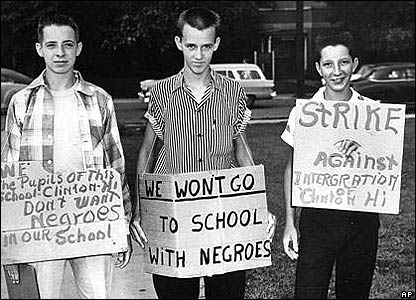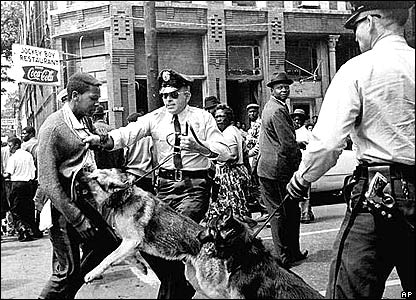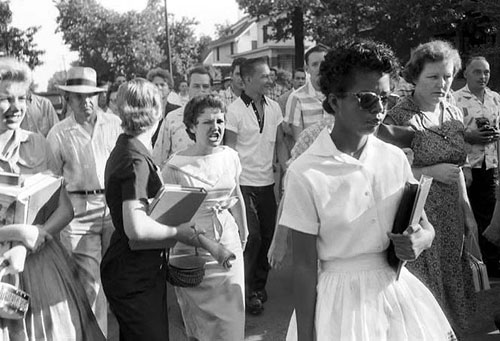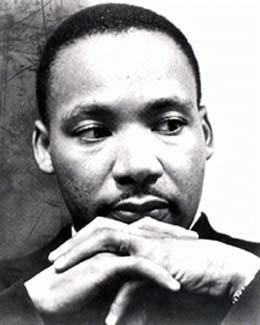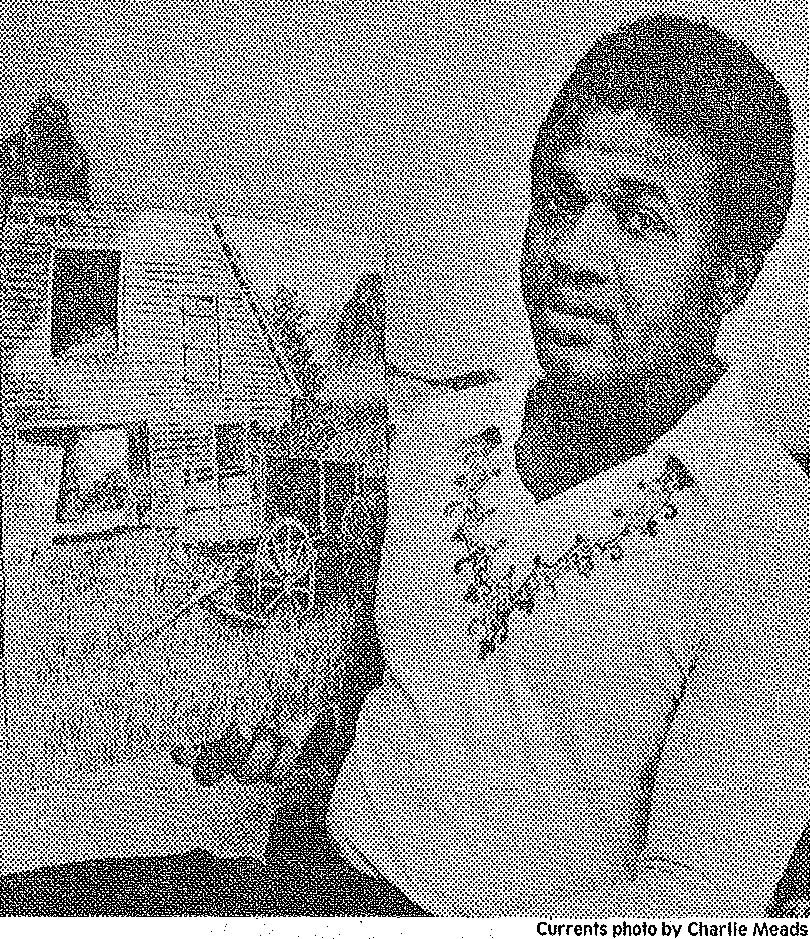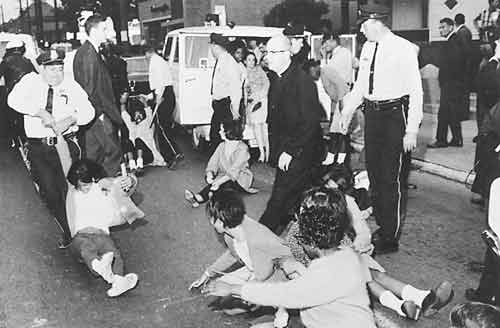"Trials of an Era"
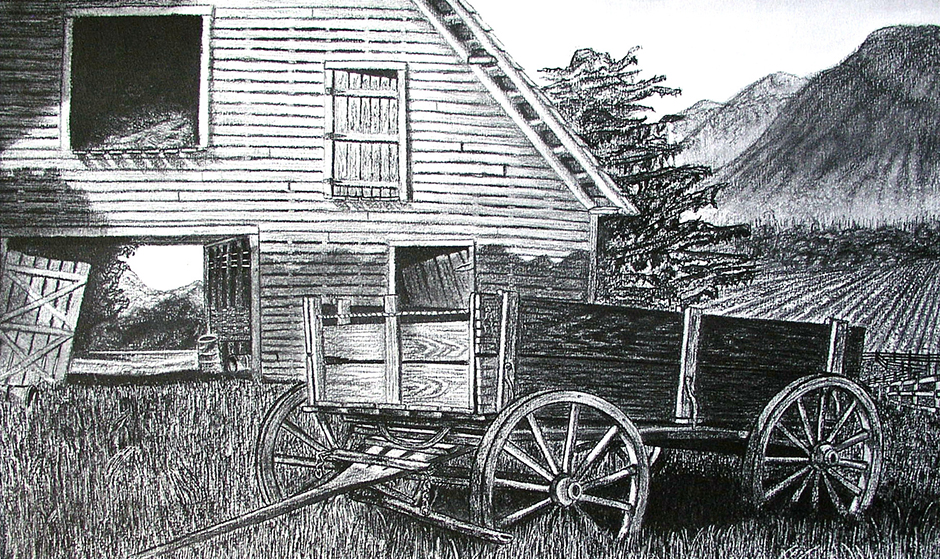
I was born in a very poor rural community on the first day of summer in the year of the landmark U.S. Supreme Court case "Brown v Board of Education," a turbulent time of racial relations in this country. My birthplace community called Twin Pines was derived from an old slave settlement located in Norfolk County, Virginia. My little community and all the other affluent communities that later developed around Twin Pines were part of an old trucking farm initially used by the owners of my ancestors to grow various produce that was trucked out to the river shores and barged to market by way of the James River. My humble home place was not arrayed with modern facilities, i.e., electric lights, appliances, and indoor plumbing. In lieu of the times and place, though, no consideration was given that we lived in substandard residentual conditions.
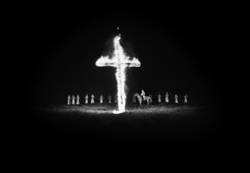
Those days were not only difficult they were downright terrifying primarily due to the racial tension associated with that era. The following is not something that was seen in a movie or read in a novel, but rather deals with personal experience due to direct exposure. Since we lived on the main road it was not unusual for whites to drive past and throw bricks and big rocks through our windows or occasionally burn crosses and throw white hoods on the ground just outside our little community to frighten us. These acts were not considered domestic terrorism in those days -- it was simply “keeping the colored folks in their place.”

Rest assured all of us in that little community and other similar communities knew our place in the social structure. Whenever we got on the community bus -- we knew to go to the back of the bus. When we got downtown we knew not to sit at the lunch counter at F.W. Woolworth although we could spend our money in this same department store. We couldn’t go into any downtown restaurant for any reason. Us kids knew not to play at the public playgrounds or go to the parks or any of the nice theaters in the area. We knew not to go near the beaches especially when they were occupied because it was taboo for a black male to see a white woman in a bathing suit. Therefore we knew the oceanfront was off limits to us. And their mindset was that our very presence on Virginia Beach would just stain the sand something nasty, or if an incoming wave should touch our skin in any fashion it would somehow pollute the entire Atlantic Ocean. We simply knew our place.
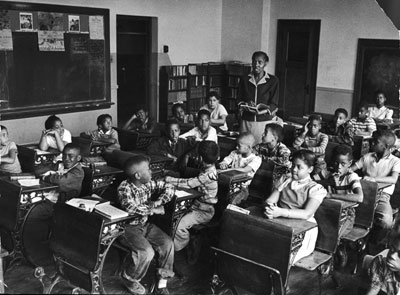
My mother and grandmother also knew their place in that they were discouraged from exercising their voting rights in the "1960 presidential campaign" because the radical tactics associated with the old "Jim Crow" laws of the segregated south. Upon starting public school six years after the U.S. Supreme Court had struck down the practice of school segregation, my friends and I were daily bussed a 30 mile trek from one black community to another to transport our schoolmates. On this trek we passed by one white elementary school after another until we finally arrived at our sad black elementary school, where we were greeted with the foremost in antiquated programs. With this methodology the school board insured all black children within this circle would indeed have an inferior educational start by giving us old school books with pages partially or completely ripped out – perhaps while in service when they were used by the white children in a previous program that had become outdated and had been passed on to us as the white children progressed to a superior program. Even certain faculty members on the teaching staff at my black elementary school in many cases were very seriously underqualified.
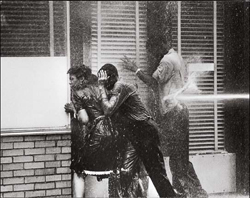
In the early 1960’s, we finally achieved modernization which included electricity, running water, and appliances, but it was 1963 that our first television set would in many ways impact my future by bringing us viewing entertainment and news reports from across the country. Unequivocally, one of the most profound images that would be seared into memory, at least my memory, was seeing black people, young men and women, even children being beaten with night sticks, hosed down with water and thrust down the street like garbage, and white police officers inciting big dogs to attack them -- this transpired because these people were in a peaceful rally pleading for their civil rights. Seemingly, there was a deluge of tears that fell from the eyes of my mother and my grandmother as they instantly fell to their knees and prayed over that situation. Upon viewing those images I suppose we all cried.
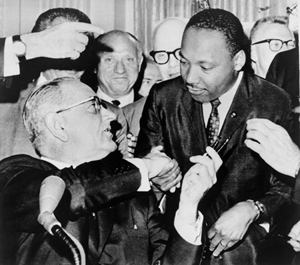
However, the Civil Rights Act of 1964 abolished the practices of being denied access to public facilities including the beaches, playgrounds, theaters, and restaurants because of race. Furthermore, this progress spilled over into 1965 when the Voting Rights Act was passed that repealed the Jim Crow laws primarily used in the South to discourage blacks from voting. When all these things happened back-to-back it was extremely difficult for my mother to believe that her prayers along with so many others didn’t change things. In many ways she became somewhat incensed by our sitting back, just watching, and being complacent while so many people had been abused and even died just for the sake of civil rights and equal opportunity. Therefore, in 1966 my mother encouraged me to attend a predominately white public school -- this she felt was a chance for us to step-up and make some kind of a contribution to support the Civil Rights Movement, however, this proved to be a very difficult task to do.

Initially this move was anything but good for me and the rest of my black classmates. We were simply not welcomed; each day our fierce white classmates made us feel like we were actually contaminating their school with our black presence as they bellowed out racial epithets like new pop songs. Nothing could have prepared me for such a daunting task as this and there came a time when doubts and fear had a very tight grip on me. The doubts seem to be the result of my confidence to sustain certain academic excellence after coming from a second-rate elementary school all while under verbal attacks daily by my white schoolmates coupled with the occasional beatings in the restrooms and on the schoolyard. The fear was my inability to avoid the sterotypical idea that if my efforts were to fail it would truly give validity to the concept that people like me were really inferior simply because of our racial characteristics.
"So my mother asked, “Eric are you willing to step up and be part of this movement and do whatever is necessary so that the sacrifices of all these people will not be in vain?” "

Once again it was my mother that gave voice to remind me about the sacrifices of so many others for racial equality including certain white people who although not facing racial discrimination still died in the struggle along with blacks; So my mother asked, “Eric are you willing to step up and be part of this movement and do whatever is necessary so that the sacrifices of all these people will not be in vain?” She also reminded me that the event we watched on television three years earlier where people were beaten, dog bitten, and hosed down was very real; but just as compelling to me was the memory of her along with my grandmother tearfully dropping to their knees telling and leaving this event with God. Of course, this pep talk was powerful enough to get me back on track.
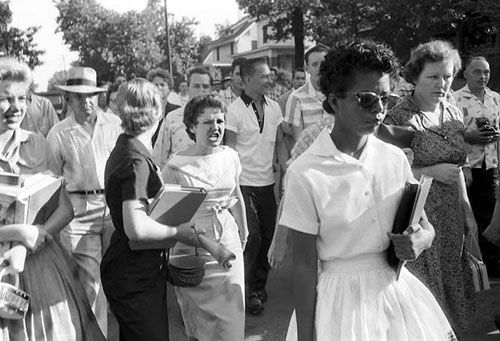
Prior to 1966 although integration was attempted black students would not attend this predominately white school because of the intimidation factor. In fact, that year there were approximately 2,000 students in attendance and only 28 of us were black -- the largest influx of black students that had ever come there. Years earlier when the integration of public schools were first being tested in places like Little Rock and Birmingham federal law enforcement was used to protect the black students from any threats of violence. Afterward, when we integrated there were no civil authorities or federal marshals to police the situation -- we were on our own and simply had to be mindful of our situation. For us black kids we knew not to separate ourselves from the presence of each other or from the presence of a few sympathetic teachers because the consequences could be violently horrible especially for the boys.
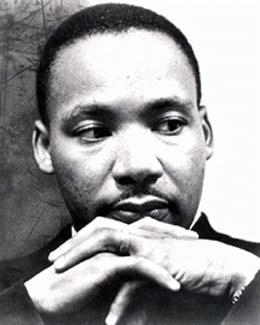
There was a horrifically memorable occasion that occurred when I briefly separated myself from my friends to go to the restroom and four white boys came in and precede to give me a real serious beat down and a friendly white classmate came into the area, caught sight of it, and helped me. Although this white classmate had just befriended me earlier he could have looked the other way because it was very unpopular to come to the aid of a black schoolmate coupled with the fact that he came from a very prominent family (his father was a judge). Subsequently, my white friend that opposed the bigots in this incident was himself labeled an “n” lover (racial epithet); this situation will never be forgotten because the very next day Martin Luther King, Jr. was assassinated in Memphis.

After all these events I had a heartfelt epiphany to commit to a much higher scholastic and vocational standard than just owning a cliché "be the best". I had to developed a methodology to reduce intricate things to simplification for my own degree of greater retentiveness. Observing the hostilities associated with the desegregation of our public schools especially in the South tainted the decency of this country and stained its fabric in such a way that it belied most of the principles on which it was founded. So my personal obligation was to always show appreciation for all those individuals that put life, limb, and reputation on the line for my benefits and opportunities, and to always have a strategy to get better results just to celebrate those ones who made personal sacrifices just so I could have a better opportunity.
"There were times when decisions were made between buying a loaf of bread or a tube of paint, and on numerous occasions the tube of paint won out."
The chance came in my senior year of high school to see if the simplification strategy was effective when a work shop competition involving eight of the local area high schools was presented. This was an effort driven by a local architectural firm in liaison with the industrial art classes within the school district for students to compete for scholarship (prize money) by submitting architectural domestication drawings to be used in conjunction with their own structural drawings. The architectural domestication drawings consist of trees, hedges, sidewalks, light poles, fountains, stepping stones, flower beds and other compliments relative to enhancing their isometric structural designs. It was my drawings along with four other students that won monetary awards. However, it was the application of my work that moved the firm to retain only me for part-time employment, a job that was used to help fund my college tuition. My newly developed methodologies allowed me to master certain mediums that were applied with considerable efficiency and expediency.
Undoubtedly my college years would be extremely challenging because the financial burden of procuring an educatuion would fall solely upon me. My machinery and my new found art skills was the only viable way to generate an adequate income to help carry my college expenses. Of course, college expenses did not include buying art supplies since art wasn't a prerequisite in my technical curriculum. Oil painting was rather expensive compared to the use of other mediums i.e. (pencils, pen & ink, pastels and charcoals); oil paints required thinners, fatteners, and other mixing agents used with the paints coupled with brushes and various substrates. There were times when decisions were made between buying a loaf of bread or a tube of paint, and on numerous occasions the tube of paint won out.
My big reward came when a newlywed couple commissioned me to do an oil painting of them in their formal attire around an intimate gazebo setting – the newlyweds and all their friends were extremely impressed with my work because the elegant gazebo with the floral arrangements around it along with the manicured hedges and gardens did not really exist - the elements in the picture were the specifications that were given to me by the husband who commissioned the work - the only actual conduit that truly existed in connection with this work was a photograph of the newlywed couple standing together dressed in their formal attire in front of their church - upon the completion of this commissioned portrait my skills as an artist were highly recognized and respected.
After my education was completed in Louisville, Kentucky I moved on to Nashville, Tennessee to finish my education. Initially the move was an easy transition because most of my financial support came by working in various TV repair shops around campus as an electronics technician. Of course, as the university expenses became evermore accumulative finding a nearby shopping mall and producing caricatures in this new location seemed like the most logical way to meet this financial burden. However, there was a promise made to all my patrons who purchased original as well as commissioned artwork that there would never come a time that any of my new creations would undermine the value of their art investments by creating inferior unappealing artwork for quick and spontaneous profiteering. In truth, caricatures are very crudely created, quick to produce, very inexpensive to buy, and often thrown away quicker than posters or postcards; in essence they hold little or no financial value as art investments.
With the inclusion of all the noticeably detailed artwork that I was introducing to the art world reverting back to drawing quick easy money caricatures in some mall would have been downright unethical. After considering the gravity of the good faith promise made to my all my patrons it appeared my only option was to get a loan and finish school with some undesirable debt because much of my life story is about my obligation to others who considered me first.
Conclusion to "Trials of an Era"
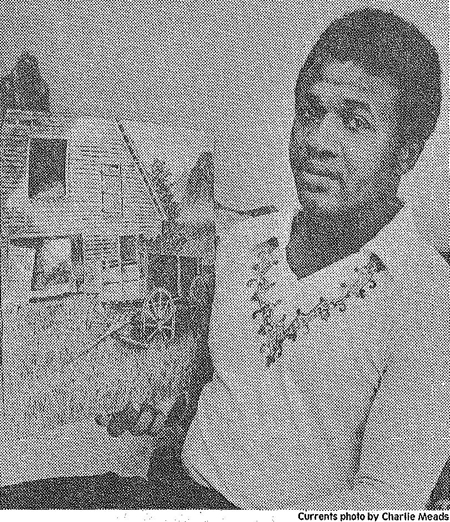
After his college days Eric pursued dual careers in art and engineering These careers harmonized in their infancy when Eric was appointed as a spokesman by the elders in his historic birthplace community of Twin Pines to appeal to their municipality for a grant to finance a major urban renewal project an effort to revitalize their historic community. This project was a very huge undertaking -- from the city’s viewpoint there wasn’t enough revenue generated to justify the expenditures to upgrade this deteriorating community with typical civil standards such as water and sewer lines, drains, paved streets, etc. basic utilities essential for urban living conditions. No subsidy would result in much more deterioration with no possibility of growth and development and would ultimately lead to the death of the community. The manicipal budget office thought it to be most prudent and sensible as well as more cost efficient to demolish this little community with bulldozers and perhaps replace it with a mini mall or recreational facilities to service the new more affluent communities developed around the Twin Pines community.
Appreciating the ramifications of this dilemma Eric devised a plan to involve all the residents of the neighborhoods surrounding Twin Pines by exchanging dialog with them about the perils that the residents of his little historic community were facing. Eric was able to win the hearts of the people that lived in those affluent communities (mostly doctors, lawyers, and other professionals) since most of the people that worked for them as nannies, maids, cooks, and gardeners, etc. resided in Twin Pines. When the neighboring communities realized the gravity of the situation they became outraged that the city would consider destroying this poor little community with all its history and displacing so many people in order to provide them with certain amenities that were never requested. They all agreed it would be very imprudent for the city to discard the very community for which the main road was named and actually runs through most of their neighborhoods and terminates in the most affluent River Shores community that shares some of its history with the Twin Pines community.
Considering the empathy that the affluent neighbors had for the residents of the Twin Pines community and the embitterment they felt toward the municipality for what they were attempting to do to this historic black community Eric was able to grab their support in three remarkable ways. First, he drafted a petition of support which in part stated that they preferred not to have additional asphalt resurfacing on their streets, but would rather see it go into the little historic Twin Pines community (this drive had over 90% participation). Second, Eric encouraged all those who would to write to their local and State representatives and articulate in their own words the disdain they felt in their own neighborhood because of the situation in the black community and what it meant to them to lose the very community that local maps described the location of their community as being in the Twin Pines area. Finally, Eric encouraged all that could to make personal appearances at city hall to show solidarity during the big showdowns.
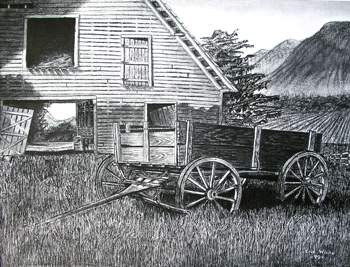
With all the outside support being procured it was necessary to have inside support which meant financial appropriations for legal fees and technical consultants. Unfortunately, the residents of this community had no contributory financial resources to support this endeavor since most of them were on fixed or very modest incomes and all the young adults including Eric lived elsewhere because it was not possible to construct new homes or renovate the existing ones because of city ordinance -- no issuance of building permits for any structural developments since it had never been traditionally accommodated with minimum civil standards which facilitates residential growth. This was one of the dilemmas that had to be considered. In an effort to relieve this indigent community of its potential money problems Eric created an art print titled “ Golden Years ” to be used as a fund raiser for the aforementioned expenses coupled with certain transportation expenditures -- to bus the residents of this community to city hall for the big showdowns.
"As an engineer Eric designed color televisions for General Electric as well as Magnavox. He was one of the initial pioneers in the development of the first big screen televisions available on the consumer market."
After many months of city council meetings with all the speeches and the liaisons with the planning commission and the housing authority, the day of the final showdown had come. In the center of the council chamber were the residents of the historic black community and encircling them were the residents of the neighboring communities all united in preserving the existence of this little historic community. This posture impressed a representative of the U.S. Dept. of Housing and Urban Development to stipulate that this community should be preserved if for nothing but for the history and went on to commend the residents of the Twin Pines area for their unity and love of neighbor prior to recommending a grant to accommodate the community with sewer, water, and the standards necessary for basic living conditions. It appeared that the residents in the Twin Pines area had come full circle in racial relations since Eric White was a child as did the whole country. Today this historic community is thriving with modern facilities, new homes, and new hope for many people who returned to establish their residence.
As an engineer Eric designed color televisions for General Electric as well as Magnavox. He was one of the initial pioneers in the development of the first big screen televisions available on the consumer market. Eric also worked as a defense contractor in conjunction with the United States Department of Defense in developing and improving certain surveillance devices used by the U.S. Department of Navy. The devices were used to track hostile submarines and other intelligence-seeking probes prowling off the shores of U.S. territorial waters. Eric also worked as a development engineer for the aerospace division of Eaton Corporation where he designed and developed logic-controlled, multi-switching devices and various control sensors used in fully automated systems for aircraft cockpits, forestry equipment, etc.
Today Eric's passion is to continue creating beautiful artwork to gratify all of his beloved patrons and he enjoys contributing to the technical community while encouraging all sorts of young people to pursue their dreams. Eric also enjoys the culinary arts, model making, and gardening. But most important to Mr. White is his learning to speak a pure language along with his friends and sharing it in a life-saving volunteer work on a global scale.


